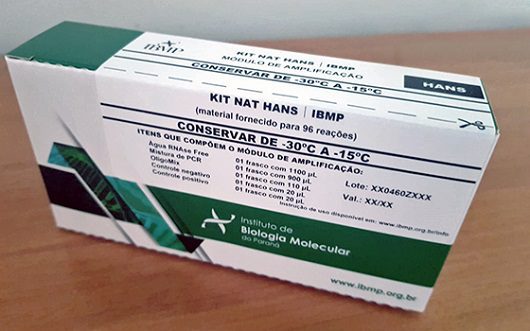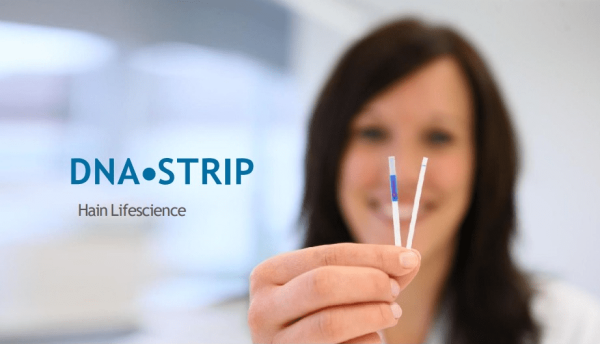Hansen’s Disease diagnostic test
The challenges of diagnosing Hansen's Disease
Understanding a little about Hansen's Disease and the limitations of the tests that are available for its diagnosis in the Unified Health System (SUS).
By Dr. Laila de Laguiche and Dr. Francisco Bezerra de Almeida Neto
To know if a person has Hansen’s Disease with a test is unfortunately not yet possible, because science does not yet have a test capable of diagnosing 100% of cases.
This is because Hansen’s Disease can manifest itself in very different ways in people. It all depends on how the person’s immune system responds when they fall ill with Hansen’s Disease. You see, falling ill with Hansen’s Disease does not mean that you have “weak immunity”. But your body can’t defend itself well against the bacteria that causes Hansen’s Disease.
Having understood this, it is also important to know that the disease develops very slowly in the body, because the bacteria also multiply very slowly. Imagine that in a throat infection, for example, the bacteria multiply in a matter of hours, while in Hansen’s Disease, the bacillus multiplies in 10 to 12 days on average!
For this reason, when a person is exposed to the bacillus, several pathways can occur. Some people (believed to be the majority) will be able to fight off the disease on their own and won’t get sick. Others will get sick, and their immune system may develop more or less a defense against it.
When the body manages to develop a good defense (which doesn’t mean that the disease will necessarily be less serious), the amount of bacteria is very small, and most of today’s tests, even those using molecular biology, are not able to detect all cases.
When the body fails to develop a good defense, the disease slowly spreads, and the number of bacilli increases. In these cases, some tests can detect the presence of antibodies against the bacteria or, depending on the test carried out, the bacteria itself or its DNA, which in this case also makes it possible to check whether or not it is resistant to some of the drugs used for treatment.
Science believes that some people, even with detectable antibodies, may not get sick, but they need to be closely monitored by their doctor. The debate about this is far from over because there are scientists who think otherwise.
The test that identifies the bacteria in a person who has never been treated confirms the diagnosis. The others are gradually being implemented in Brazil and are not yet fully available everywhere.
These tests are not available for direct sale to the public, because as we have seen, the interpretation is complex and can only be carried out by your doctor.
Diagnostic tests are no substitute for a physical examination, which should be carried out by an experienced doctor!
Even so, it’s important to always remember that no diagnostic test will replace the medical examination that should be carried out in case of suspected Hansen’s Disease, because they can be negative, even if you are ill. Always see a doctor when you feel numbness in your hands and feet, tingling, cramps, or a “pinching” sensation in your nerves, even if you don’t have any skin changes.
These are the symptoms that usually appear even before skin lesions are present. Remember that these lesions have altered sensitivity and various forms of appearance, from white spots, rounded spots, reddish areas to lumps or “bumps” in the ears in more advanced cases.
Hansen’s Disease resembles many other diseases in that it affects various organs, such as the joints, liver, lymph nodes (which can cause “lymph nodes”), eyes, testicles and especially the nerves in the body. It is therefore often confused with other pathologies, such as arthritis, liver disease, carpal tunnel syndrome, fibromyalgia, other infections, etc.
As Brazil ranks second in the world for Hansen’s Disease cases, it’s worth remembering that if you feel any of these symptoms, you should see a doctor. Preferably one who specializes in the disease, so that your care is of the highest quality. And don’t rely on test results alone. Remember: all tests carried out can be negative! It’s your doctor who can tell you whether or not you have the problem, only after examining you in detail.
If you do have the problem, talk to everyone in your family so that they can be examined too, even if they don’t feel anything. Contrary to what you might think, advanced disease can be completely symptom-free.
Early diagnosis will help you avoid the sequelae of the disease that can occur. These sequelae can be irreversible. As with any disease, everything is easier to treat at the beginning.
Which exams are we talking about?
The Unified Health System (SUS) has always offered direct testing for the bacillus in a test called “bacilloscopy”. Over the years, the places that carry out this test have become increasingly scarce, but it is still possible to find them. When positive, it defines whether a person has Hansen’s Disease, but when negative, it doesn’t rule out the possibility.
Another method available is skin biopsies if there are suspicious lesions. Generally, the doctor needs to request a special stain in the histopathology (laboratory where the examination is carried out), which is called “Ziehl-Neelsen”. This staining is not routinely carried out and the test loses its value. Some laboratories do this automatically, but it’s always a good idea to ask your doctor who carried out the collection to reinforce this need.
Three laboratory tests have recently been incorporated into the SUS. One of them investigates antibodies against the disease in family contacts of patients. When positive, they increase the need for a thorough examination by the doctor, but do not guarantee that the person is actually ill.
Another test detects the DNA of the bacillus that causes the disease through a skin biopsy. Once again, the understanding of the Brazilian Ministry of Health is that even if the patient is positive, they need to be examined to confirm the diagnosis.



Other tests that also help with diagnosis
Electroneuromyography: can detect nerve involvement in the body even without skin lesions. Sometimes it takes a long time to get authorization, depending on where the person is.
Nerve ultrasound: Checks for changes in the shape and “structure of the nerve” and can help in early-stage cases of the disease. It requires professionals familiar with the technique, who are not easily available in Brazil.
Anti-PGL-1 serology: Measures the amount of antibodies against Hansen’s Disease. Only carried out in research centers. The widely available test we talked about earlier only detects the presence of these antibodies but does not measure their quantity. It helps but does not define the diagnosis alone. It is not carried out in the private network.
In conclusion, we still don’t have 100% reliable tests, and none of them, to reiterate, will replace the examination carried out by the doctor.
Therefore, the diagnosis established by a specialist and experienced doctor should not be contested based on the negative results of any of these tests, which, as the name implies in any disease, will always be “complementary” tests.
It’s up to you to prevent the sequelae of the disease and avoid further damage, as long as you are diagnosed with Hansen’s Disease. Don’t waste time looking for information on the internet to make your decisions. Hansen’s Disease is a very complex disease, even for experts in the field. The experts themselves defined a long time ago that “time is nerve”. In other words, the more time you lose, the greater the chances of complications and sequelae from this disease, which can be treated free of charge by SUS.
Don’t be afraid of the diagnosis! Get treated as soon as possible. Listen to a specialist doctor, follow these recommendations, be disciplined in your treatment and everything will be fine!
Sources
- https://www.arca.fiocruz.br/handle/icict/37312
- https://link.springer.com/article/10.1007/s00403-008-0857-y
- https://www.gov.br/saude/pt-br/assuntos/media/pdf/2021/fevereiro/12/boletim-hanseniase-_-25-01.pdf
- http://hansen.bvs.ilsl.br/textoc/livros/OPROMOLLA_DILTOR_nocoes/PDF/hansen_exper.pdf
- https://bvsms.saude.gov.br/bvs/publicacoes/guia_de_hanseniase.pdf
